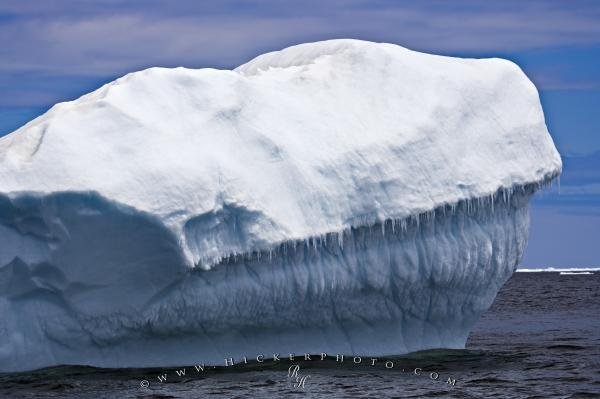Photo: Atlantic Ocean Iceberg Facts Newfoundland
By booking an iceberg watching tour out into Iceberg Alley on the Atlantic Ocean off the coast of Newfoundland, visitors get to see these beautiful and ancient mountains of ice, and receive fun facts and information from on board interpreters.
One of the best places in the world to see icebergs is from the Northern Peninsula of Newfoundland where, during the spring and summer months, boat tours depart St Anthony Harbour and head out onto the great Atlantic Ocean. Fun and informative facts are provided on board by interpreters with knowledge of the icebergs such as how they're created, and how they came to be here off the coast of Newfoundland. Here are a few facts about Icebergs we learned during one such tour.
The icebergs seen off the coast of Newfoundland originate from the ancient Glaciers of Greenland. An incredible fact is that these glaciers contain ice which is said to be between 10,000 to 15,000 years old - now that's old indeed. Ice ... continue below the picture...
Atlantic Ocean Iceberg Facts Newfoundland

Pictures from photo gallery "Landscape Pictures"
This picture is part of the photo album "Ocean Pictures" - there are more beautiful images waiting for you.
Related stock photo galleries, pictures & travel ideas:
Atlantic Ocean Iceberg Facts Newfoundland
- Atlantic Canada (1154)
- Atlantic Ocean (74)
- Canada (6388)
- Canvas Gallery Wrap (239)
- Eastern Canada (1337)
- Honeymoon Canada (866)
- Ice (448)
- Iceberg Alley (27)
- Iceberg (216)
- Newfoundland Labrador (1086)
- Newfoundland (1018)
- Northern Peninsula (108)
- St Anthony (32)
- Tourist Attractions (809)
- Viking Trail (790)
- Water (1551)
... shelves from the glaciers break off in pieces and fall into the sea (a process called calving) and an iceberg is born. From here an iceberg begins its 2-3 year journey - ultimately southwards. They first head north - picked up by the currents and ushered into Baffin Bay where they will spend their first winter locked in by pack ice. Come spring and once the pack ice melts, the icebergs are released and are once again at the mercy of the currents that bring them through the Davis Strait towards the Labrador Sea and northern coast of Labrador. They will spend another winter trapped in pack ice off the coast of Northern Labrador in the Labrador Sea. They are released once again when the pack ice melts and finally make their way south along the Labrador Coast, then sail past the Atlantic Ocean coast of Newfoundland. While some large icebergs manage to enter the Strait of Belle Isle and get trapped in the Gulf of St Lawrence, most of them cruise the coastline towards the Avalon Peninsula.
All in all, these large bergs will take approximately 2 months to melt from the time they arrive off the coast of the Great Northern Peninsula of Newfoundland.
Iceberg in Iceberg Alley during an Iceberg Watching Tour with Northland Discovery Boat Tours who operate out of St Anthony, Viking Trail, Great Northern Peninsula, Northern Peninsula, Newfoundland, Canada.
Technical Information:
I photographed this photo with the digital SLR camera model Canon EOS-1Ds Mark II, aperture of f/7.1, exposure time of 1/400 sec. on ISO 100, as always I used a original Canon Lens, the focus lenght for this picture was 180mm.
By booking an iceberg watching tour out into Iceberg Alley on the Atlantic Ocean off the coast of Newfoundland, visitors get to see these beautiful and ancient mountains of ice, and receive fun facts and information from on board interpreters.
